
Google to trial AI in UK traffic light systems to reduce stop-and-go emissions
Google is trialling artificial intelligence (AI) in Manchester’s traffic light system to reduce stop-and-go emissions and improve the flow of vehicles. The technology giant announced the UK launch of its Project Green Light on Tuesday, working alongside Transport for Great Manchester (TfGM) to run the pilot. It coincides with Google hosting a major sustainability event in Brussels, where the firm will outline the innovations it has been working on across high-emission industries like transport and energy, including how it is using AI for climate solutions. The company said it found that half of emissions at traffic intersections come from vehicles stopping and starting. To help reduce these emissions, Google’s Green Light research initiative uses AI as well as driving trends from Google Maps to model traffic patterns and make recommendations for making the existing traffic light plans more efficient. Google said city engineers can implement these plans in as little as five minutes using existing infrastructure. The Green Light programme is live at 70 junctions across 12 cities, including Haifa in Israel, Rio de Janeiro in Brazil and Bangalore in India. Early data from those cities indicate a potential for up to 30% reduction in stops and up to 10% reduction in emissions at junctions, Google said. Manchester, the first UK city to host the pilot, has around 2,400 traffic signals and sees millions of journeys each week. Debbie Weinstein, Google UK managing director and vice president, said: “AI is the most profound technology that we’re working on today, with the potential to boost the UK’s productivity and support net zero ambitions. “That’s why we’re excited to be partnering with Transport for Greater Manchester to pilot Project Green Light here in the UK. Our aim is to make the network run as efficiently as possible and we look forward to seeing how we can use what we’ve learnt from this pilot to improve journey times for all road users David Atkin, Traffic for Greater Manchester “Already, this early stage AI-powered tool uses existing infrastructure to provide city planners with a cost-effective and efficient way to improve traffic flow, reduce stop-and-go traffic and cut emissions. “We look forward to partnering with more organisations across the country to help drive innovative solutions that unlock the benefits of AI.” David Atkin, TfGM’s analysis and reporting manager, said Greater Manchester’s road network is “complex”, adding that the needs of motorists, cyclists, pedestrians and public transport users need to be balanced. “With traffic levels now at or beyond pre-pandemic levels, we are working really hard to tackle congestion and are delighted to be amongst the first areas in the world – and the first in the UK – to work with Google on the innovative Green Light initiative,” he said. “The pilot provided valuable insights and teams from both Green Light and TfGM brought expertise and ideas to the table to improve journeys by up to 18% and reduce emissions. “Our aim is to make the network run as efficiently as possible and we look forward to seeing how we can use what we’ve learnt from this pilot to improve journey times for all road users.” Read More Broadband customers face £150 hikes because of ‘outrageous’ rises – Which? Rise of AI chatbots ‘worrying’ after man urged to kill Queen, psychologist warns William hails ‘amazing’ eco-friendly start-up businesses Royal website subject to ‘denial of service attack’, royal source says TikTok finds and shuts down secret operation to stir up conflict in Ireland Viral WhatsApp warning of cyberattack targeting Jewish people is fake
2023-10-10 21:59

A long-lost part of the Earth has been discovered in Borneo
Ancient remnants of a long-lost part of the Earth believed to be 120 million years old have been located by experts in Borneo. New discoveries about our planet are continuously being made by experts, from finding continents that have been missing for hundreds of years to discovering vast oceans hidden beneath the Earth’s crust. Now, a new amazing discovery revealed details of the 120-million-year-old tectonic plate, now named Pontus. A prediction of the crust’s existence came when Suzanna van de Lagemaat, a graduate geologist at Utrecht University in the Netherlands, and her supervisor, Douwe van Hinsbergen, analysed geological data from mountains in the Asia-Pacific region. While studying rock formations in northern Borneo, Van de Lagemaat came across some clearcut signs of the ancient Pontus plate, explaining: “We thought we were dealing with relicts of a lost plate that we already knew about.” She continued: “But our magnetic lab research on those rocks indicated that our finds were originally from much farther north, and had to be remnants of a different, previously unknown plate.” Researchers estimate that the Pontus plate, which formed part of the world’s crust before the break up of supercontinent Pangaea, was around a quarter of the size of the Pacific Ocean, based on reconstructions of what it would have looked like 160 million years ago. Pontus sat beneath the vast ocean that separated Eurasia and Australia at the time. As Pangaeo separated, it’s believed the plate was swallowed up by other plates that carried countries such as The Philippines and Borneo to their current day locations. Van de Lagemaat’s research focussed on a complex region of tectonic plate activity known as the Junction Region. It runs between Japan, Borneo, the Philippines, New Guinea, and down to New Zealand. Through her research, she was able to use the data to create a clip reconstructing the tectonic plate movements that have occurred from the time of the dinosaurs up to the present day. Sign up to our free Indy100 weekly newsletter Have your say in our news democracy. Click the upvote icon at the top of the page to help raise this article through the indy100 rankings.
2023-10-10 21:30

WhatsApp says warning message of cyberattacks on Jewish people is a hoax
WhatsApp has said warnings about cyberattacks targeting Jewish people are a hoax with no basis in reality. The Meta-owned platform has debunked several messages widely circulating on social media platforms that warn Jewish people will be the target of cyberattacks through forwarded messages. But WhatsApp communications manager Emily Westcott told The Independent that the forwarded messages, which have been widely shared on the platform as well as across other social media including X/Twitter, are a hoax. The clarification comes amid the ongoing conflict in Israel after an unprecedented surprise attack by Palestinian militant group Hamas on Saturday. The hoax messages said clicking on pictures of the fighting shared on WhatsApp as a file called “Seismic Waves CARD” would quickly enable phone hacking if opened. Crypto influencer Scott Melker, who has nearly a million followers on X, was one of the users who shared the false warning. “Do not open it, it will hack your phone in 10 seconds and cannot be stopped in any way,” Mr Melker’s post on his verified X account falsely claimed. Ms Westcott pointed out that the same rumour circulated after an earthquake struck Morocco last month that left nearly 3,000 people dead and thosands more injured. In the aftermath of the devastating earthquake, messages began circulating on social networks that photos of the quake shared in a file named “Seismic Waves CARD” on platforms would enable hackers to access one’s phone if opened. “The file is called Seismic Waves CARD, don’t open it or see it, it will hack your phone in 10 seconds and it cannot be stopped in any way. Pass the information on to your family and friends,” the false message had read. WhatsApp also told the fact-checking site Snopes that these messages were “false”. Another Italy-based fact-checking website, Bufale.net, also said the purported “hack” was a hoax. The recent use of the same message adds to the steep levels of misinformation and disinformation being spread following the conflict in Israel. Elon Musk, the multibillionaire owner of X, has also come under heavy criticism for the spread of misinformation on his platform over the attack. The Tesla titan pleaded with X users on Sunday to try and stick to the facts and “stay as close to the truth as possible”. Old videos are being repackaged and circulated on X as if they are from the most recent attack on Israel. One such widely shared video, that falsely claimed to show a Hamas militant shooting down an Israeli helicopter, was later found to be a clip from a video game. Another clip of Israel bombing a Gazan office tower that was shared widely was found to be from fighting that actually occured in 2021. X has not immediately responded to The Independent’s request for comment. Read More Huge crowd chants ‘free Palestine’ in front of Israel’s London embassy Aid groups scramble to help as Israel-Hamas war intensifies and Gaza blockade complicates efforts More than 10 Britons feared dead or missing as Netanyahu exacts revenge on Hamas X introduces limits to prevent non-paying users from replying to posts New discovery is ‘holy grail’ breakthrough in search for aliens, scientist say Earth hit by a huge solar storm that would devastate civilisation, trees show
2023-10-10 20:58
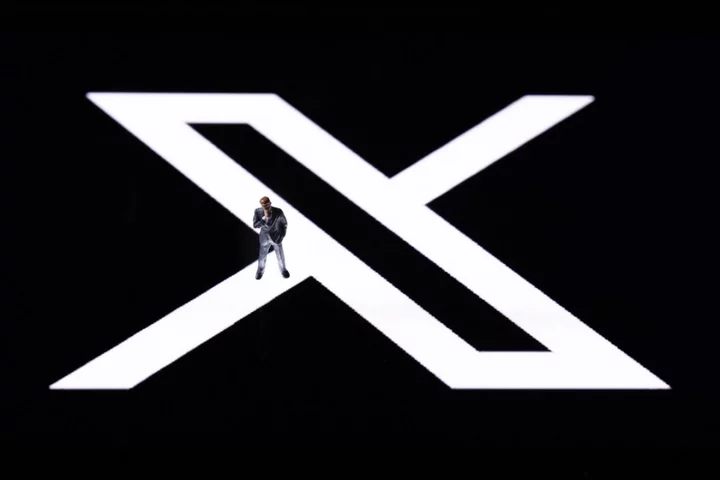
X introduces limits to prevent non-paying users from replying to posts
Elon Musk has introduced new controls to X, formerly Twitter, that allow users to limit who can comment on posts to just paying users. The reply paywall will prevent unverified accounts that do not pay for X Premium from engaging in discussions on certain posts. It is the latest change to the platform that Mr Musk has overseen since taking over Twitter last year and renaming it X. The tech billionaire, who is the most-followed person on X, said the latest limits “should help a lot with spam bots”. Mr Musk has brought about a complete overhaul of the way verification on the platform works since his takeover, removing the legacy blue ticks from celebrities, journalists and politicians, and giving them to anyone who paid a monthly subscription fee. These paying users were also given prominence over non-paying users when appearing in searches, as well as prioritised ranking in conversations. The move comes amid reports that Mr Musk is planning to test new subscription options for X users, which could see the introduction of up to three tiers. Each premium tier will offer different levels of ad exposure, according to a report in Bloomberg, though it is not clear if the price of the top tier will differ from the $11 (£9.60) that it currently costs. Other social media firms are also considering similar subscription models, with both Meta and TikTok among those who will potentially supplement their advertising revenue with a user-funded model. Monthly fees for Meta’s platforms, which include Facebook and Instagram, could cost between €10 (£9) and €13 in Europe, The Wall Street Journal reported last week, and come in response to Europe’s data privacy laws. These laws are seen as a threat to the lucrative business model of showing personalised ads to users, with a spokesperson confirming that Meta was exploring options to “comply with evolving regulatory requirements”. Read More The mystery AI device that could replace your phone Schoolboy almost dies from swallowing magnets for TikTok challenge Woman shares honest review of New York City apartment TikTok mom slammed after making 5-year-old son run in 104 degree heat
2023-10-10 19:15

There's an unsavoury reason for the weird patterns on train and bus seats
Whether it's on a bus or a train, you've probably noticed how the seats have a distinctly bold and garish pattern - but why is this the case? Well, it's not for aesthetic design reasons but rather it's down to the fact that the patterns are able to effectively cover up stains. Just think about how many people get on public transportation for their daily commute to work, the millions of people who will plonk themselves on those seats throughout the year as well as those using the nighttime service. There are bound to be drinks and food spilt on the seat, and so in response to this inevitability it's better to have busy patterns rather than plain ones - otherwise we would perhaps think twice about sitting. But nowadays, the various patterns on different modes of public transportation are seen as iconic designs for that particular area of the world. For example, last year Premier League football team Arsenal released shirts with a design inspired by the bold pattern which appears on Piccadilly line trains. Meanwhile, there are a number of factors to think about when designing the seat pattern such as how it looks in both daylight and artificial light. @plutosdestiny Bus seats are made of a special fabric with unusual patterns because it helps them mask stains, wear and tear and look fresh without the need for much maintenance. The weird, mind-bending patterns are designed to make the seats appear clean and unworn, even though they conceal a lot of dirt within those wild patterns. [Credit - KubulMKM - YT] The fabric is also an integral consideration, the material used for the seats is moquette and it is different to the sofa you sit on at home. “Coming from the French word for carpet, moquette has been seen and sat upon by millions of commuters on buses, trains, trams and trolleybuses for over 100 years,” the London Transport Museum explained. “It is produced on looms using the Jacquard weaving technique, with a pile usually made up of 85% wool mixed with 15% nylon.” But what makes it the ideal material for this purpose? “Moquette was chosen for public transport for two reasons," it continued. "First, because it is hard-wearing and durable. Second, because its colour and patterns disguise signs of dirt, wear and tear. On top of this moquette had the advantage of being easy and cheap to mass-produce.” Something to contemplate next time you're sitting on the bus or tube. Sign up to our free Indy100 weekly newsletter Have your say in our news democracy. Click the upvote icon at the top of the page to help raise this article through the indy100 rankings.
2023-10-10 18:24
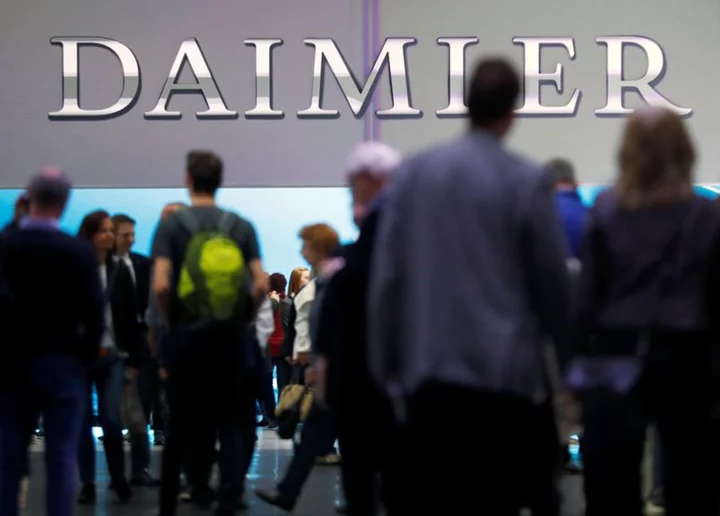
Daimler Truck premieres new eActros 600 in step towards all-electric shift
BERLIN Mercedes-Benz Trucks, the European division of commercial vehicle maker Daimler Truck, premiered its battery-electric long-haul truck eActros
2023-10-10 16:29
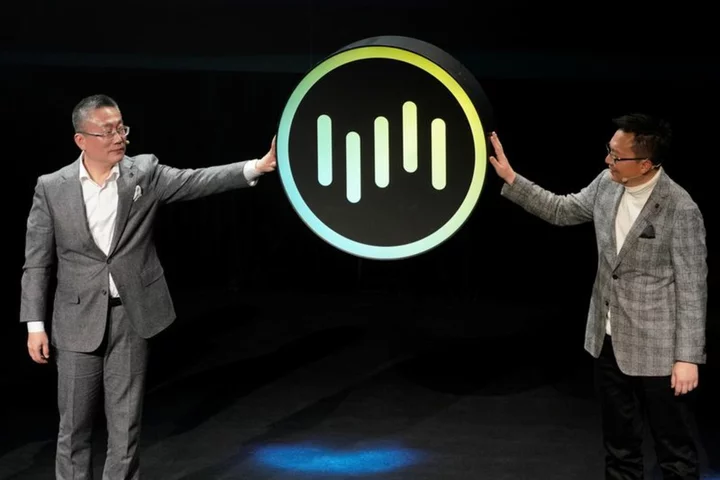
Chinese EV startup WM Motor files for bankruptcy
BEIJING (Reuters) -Chinese electric vehicle startup WM Motor has filed for bankruptcy, marking the demise of a promising standout among
2023-10-10 14:22
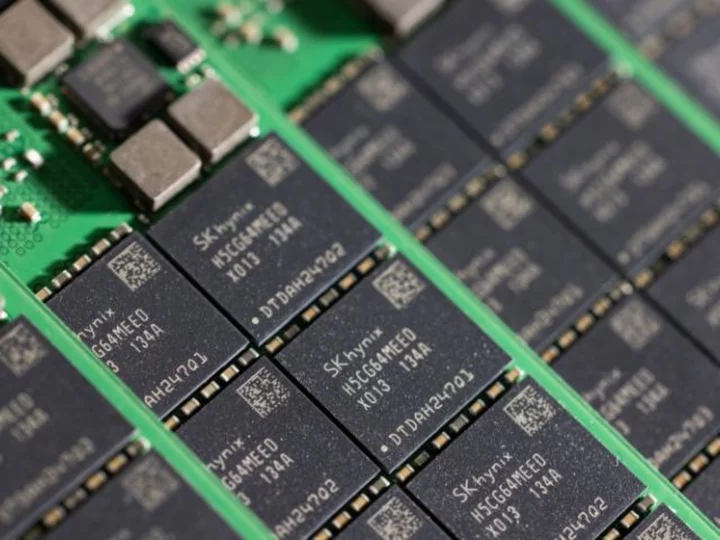
South Korean firms get indefinite waiver on US chip gear supplies to China
Samsung Electronics and SK Hynix will be allowed to supply US chip equipment to their China factories indefinitely without separate US approvals, South Korea's presidential office and the companies said on Monday.
2023-10-10 11:50
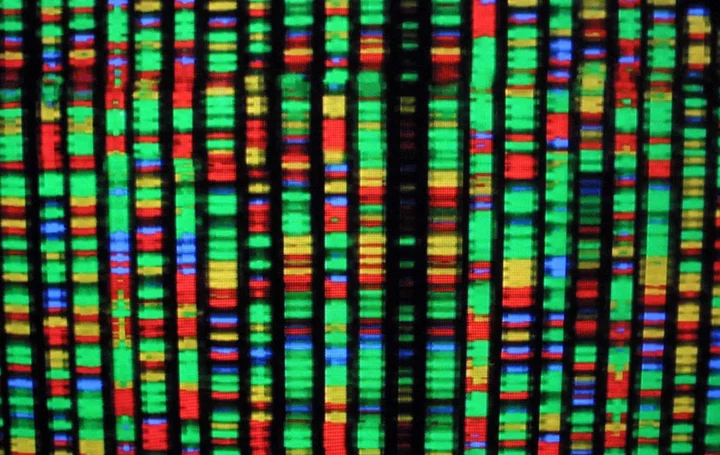
23andMe says hacker appears to have stolen people’s genetic information
A hacker has stolen the personal genetic information of 23andMe users, the company has said. 23andMe allows people to send in a sample of their DNA and have it tested, with the results sent into them. Customers can find out what their genetic information might tell them about their health, for instance, as well as their relatives and where they might have lived. But some of that same information was accessed by hackers and appears to have been made available online, the company said. It made the statement after the hackers appeared to be attempting to sell the information online. 23andMe did not say whether some or all of that data – which included the names of celebrities – was actually legitimate. But it did say that information had been “compiled from individual 23andMe.com accounts without the account users’ authorization”. Its investigation was still continuing, the company said, and it is unclear the scale of the problem. The data appears to have been taken by a hacker who used recycled login credentials from other websites that had since been hacked, the company said. That is a common technique for breaking into profiles, and cyber security experts suggest using different passwords on different websites and changing them regularly to avoid it. Once the hackers were able to get into those accounts, they used a feature on 23andMe that allowed them to gather yet more information. 23andMe offers a tool called “DNA Relatives”, which lets users connect with people with similar genetic information to help assemble their family tree – meaning that hackers were able to gather information about other people whose accounts had not actually been compromised. The company said that it had no indication that its own systems had been attacked, or that it was the source of the credentials used. But it advised people to change their password and set up multi-factor authentication to ensure that their accounts were secure. Read More Earth hit by a huge solar storm that would devastate civilisation, trees show Keir Starmer deepfake shows alarming AI fears are already here New discovery is ‘holy grail’ breakthrough in search for aliens, scientist say
2023-10-10 01:48
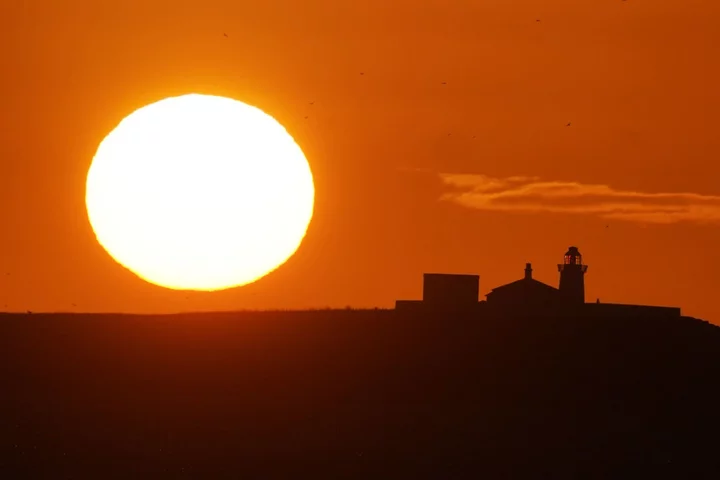
Earth was hit by largest ever solar storm that would devastate civilisation today, tree rings show
Earth was once hit by an extreme solar storm that would devastate human civilisation if it happened today, tree rings show. Scientists were able to piece together the solar storm from ancient tree rings that were found in the French alps, and showed evidence of a dramatic spike in radiocarbon levels some 14,300 years ago. That spike was the result of a massive solar storm, the biggest ever found by scientists. If a similar event happened today, it could knock the power grid offline for months and destroy the infrastructure we rely on for communications, scientists have warned. The researchers behind the new study have urged that the extreme nature of the newly discovered event should be a warning for the future. “Extreme solar storms could have huge impacts on Earth. Such super storms could permanently damage the transformers in our electricity grids, resulting in huge and widespread blackouts lasting months,” said Tim Heaton, professor of applied statistics in the School of Mathematics at the University of Leeds. “They could also result in permanent damage to the satellites that we all rely on for navigation and telecommunication, leaving them unusable. They would also create severe radiation risks to astronauts.” Further work is needed to ensure that the world is protected from similar events happening again, scientists said. And more research is required to actually understand how and why they might happen. Scientists have found nine extreme solar storms, or Miayake Events, that happened in the last 15,000 years. The most recent of them happened in the years 993 AD and 774 AD, but the newly found one was twice as powerful as those. Researchers do not know exactly what happened during those Miyake Events, and studying them is difficult because they can only be understood indirectly. That makes it difficult for scientists to know how and when they might happen again, or if it is even possible to predict them. “Direct instrumental measurements of solar activity only began in the 17th century with the counting of sunspots,” said Edouard Bard, professor of climate and ocean evolution at the Collège de France and CEREGE. “Nowadays, we also obtain detailed records using ground-based observatories, space probes, and satellites. “However, all these short-term instrumental records are insufficient for a complete understanding of the Sun. Radiocarbon measured in tree-rings, used alongside beryllium in polar ice cores, provide the best way to understand the Sun’s behaviour further back into the past.”  The largest solar storm that scientists were able to actually observe and study happened in 1859, and is known as the Carrington Event. It caused vast disruption to society, destroying telegraph machines and creating a bright aurora so bright that birds behaved as if the Sun was rising. The Miayake Events like the newly found storm would have been vastly more powerful, however. They were discovered by slicing ancient trees that are becoming fossils into tiny rings, and then analysing the radiocarbon that was present in them. Their work is published in a new article, ‘A radiocarbon spike at 14,300 cal yr BP in subfossil trees provides the impulse response function of the global carbon cycle during the Late Glacial’, in the journal The Royal Society’s Philosophical Transactions A: Mathematical, Physical and Engineering Sciences.
2023-10-10 01:16

Elon Musk's X adds to fog of war at outset of Israel-Hamas conflict
Misinformation has run rampant on Elon Musk's social media platform X in the 48 hours since Hamas militants' surprise attack on Israel, with users sharing false and misleading claims about the conflict and Musk himself pointing users to an account known for spreading misinformation.
2023-10-10 00:48
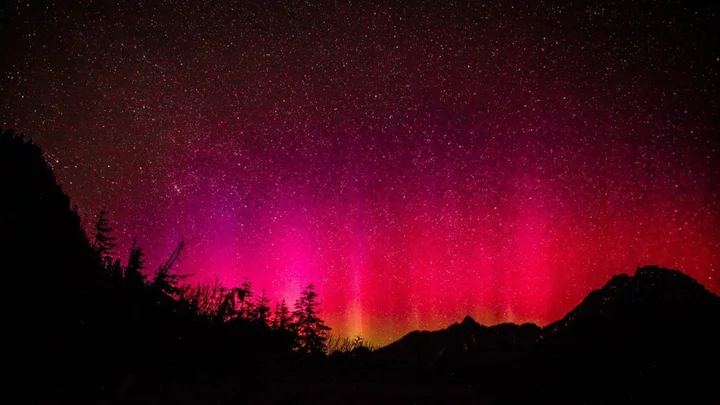
The sun ripped a hole in the Earth's magnetic field and the results were spectacular
The Sun has been punching holes in the Earth’s magnetic field lately – but that’s not as alarming as it sounds. Instead, they have been sparking magnificent light shows across Europe and North America, made up mainly of crimson auroras and sustained periods of red sky. The displays have been caused by disturbances in the Earth’s magnetic field, which happened after a massive ejection of plasma from the Sun came hurtling our way. The event, known as a coronal mass ejection, made a hole in the planet’s magnetic field, allowing highly charged particles to make their way in and cause a geomagnetic storm. Normally, the Northern Lights are made up of mainly green, with the occasional flash of other colours including red. However, longer periods of red light shows are very rare. The highly charged particles then get channelled towards the north and south poles, where they interact with gas molecules in the atmosphere. They, in turn, release photons, causing the aurora borealis in the north and aurora australis in the south. Normally, the Northern Lights are made up of mainly green, with the occasional flash of other colours including red. However, longer periods of red light shows are very rare. But what makes this geomagnetic storm different is that the particles coming from the Sun collided with oxygen atoms higher in the Earth’s atmosphere than normal. The altitude at which this interaction happens dictates the colour of the aurora. This time, the charged particles were between 300 and 400 kilometres in the sky. There, the oxygen is less concentrated and doesn’t need as much energy to cause it to react. It all adds up to a flash of crimson red light in the sky. Somewhat excitingly for aurora-watchers, this sort of event is likely to get more common over the next two years, as the Sun’s activity becomes heightened until its peak in roughly July 2025. Looks like there will be more of these incredible ruby light shows soon enough. Sign up to our free Indy100 weekly newsletter Have your say in our news democracy. Click the upvote icon at the top of the page to help raise this article through the indy100 rankings.
2023-10-09 23:20
